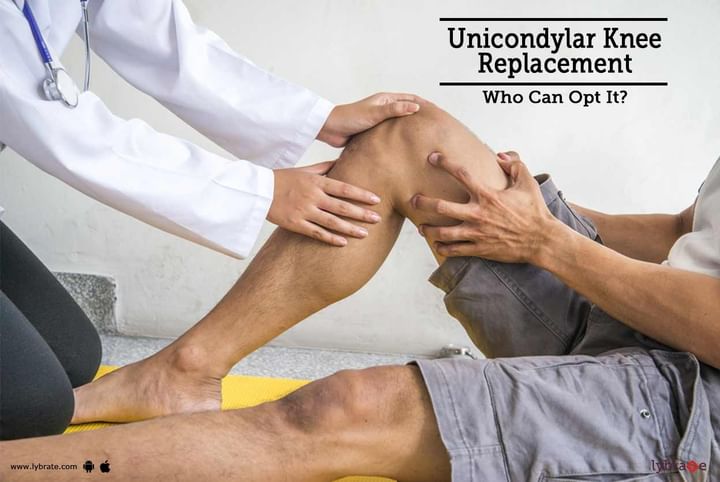Unicondylar Knee Replacement - Who Can Opt It?
Knee problems can be quite annoying but if this problem becomes regular, it brings life to a standstill. The movement becomes restricted. Many associated problems slowly crop up. Thus, it is best to nip the problem in the bud. While some people might experience a problem in the full knee, in some people, only a single compartment (tissue or cartilage) of the knee may be affected. For such patients, Unicondylar Knee Replacement comes as a blessing.
Unicondylar knee replacement, also known as the Unicompartmental Knee Replacement or Partial Knee Replacement is the most sought-after knee replacement surgery. The surgery involves replacing only the worn out or affected part (cartilage) of the knee, thereby preserving the healthier cartilages and tissues of the knee.
In the last few years, incidences of osteoarthritis have been on the rise. The unicondylar knee replacement surgery has made life a lot easier for people suffering from osteoarthritis (a condition where the articular cartilage or the connective tissue present within the knee joint begins to wear out).
Unicondylar knee replacement is ideal for people facing problem with:
- Severe osteoarthritis (Median or Lateral) that results in the painful, swollen, and stiffened knee.
- Only a small portion of the knee is affected.
- A person experiences great difficulty in movement.
- People over 48 years of age are mostly advised to undergo this surgery. Many young people with osteoarthritis opt for this surgery.
However, the surgery may not be a wise idea for
- A person with Rheumatoid Arthritis and Angular Deformity (acute).
- A person whose larger portion of the knee is affected.
- A person who had undergone osteotomy (surgical excision followed by reshaping of bones).
- People with an unstable or weak knee should avoid this surgery.
Pre- surgery, a person should
- Avoid taking any anti-inflammatory and herbal medicines (minimum 10 days before the surgery).
- Get yourself medically examined for any health complications (that might interfere with surgery).
- Follow a healthy lifestyle. Avoid smoking and drinking.
Procedure of Unicondylar Knee Replacement:
- For the surgery, the patient is either given general anesthesia or a spinal (or epidural) one.
- Next, a compressing device (tourniquet) is put around the upper part of the thigh. This is done to avoid excessive blood loss during the surgery.
- A 7cm incision is made over the knee.
- The damaged parts (bones and cartilages) of the knee are then carefully removed.
- The surgeon next replaces the excised parts with metallic implants. Once the metallic part fits into the knee, it is adhered to the bone with (or without) bone cement.
- The surgeon then stitches the incised area, followed by dressing and bandage.
Unicondylar knee replacement recovery time is quick, between 3-4 weeks. However, the concerned person may require physiotherapy for the next 3-6 months.
Advantages of Unicondylar Knee Replacement:
- The surgery is less invasive with a quick recovery time.
- The surgery replaces only the affected knee part.
- Blood transfusions are seldom required.
- A person gets back to normal life faster.
- The surgery requires less time (~ 1-2 hours).
You need to be careful about:
- Infection at the incision site, though it is very rare.
- Injury in blood vessels, ligaments, or nerves.
- Fracture in the bone
Update From Lybrate: After a particular age, everyone suffers from bone or joint issues. To keep these problems at bay, Buy Bones & Joint Care products from Lybrate.



+1.svg)
